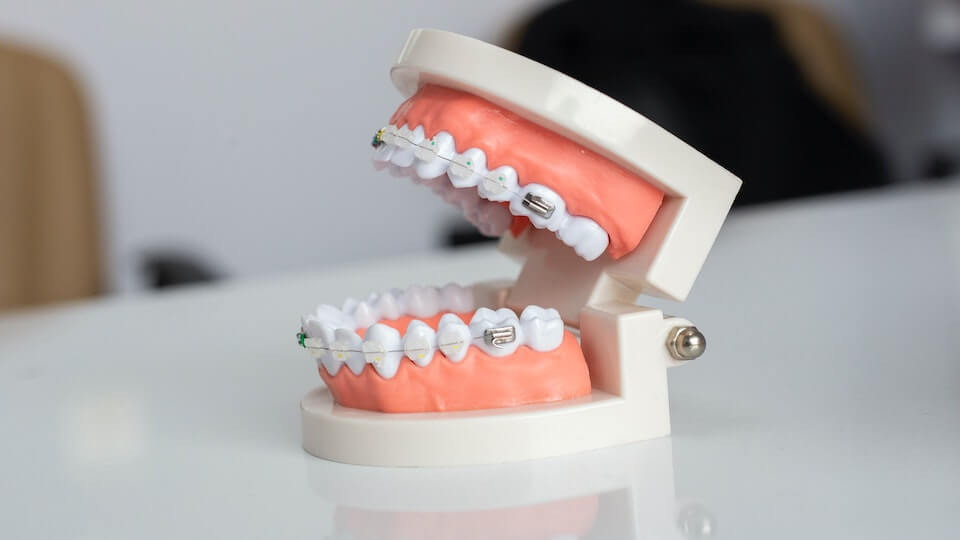In my last entry, I fielded a question from a reader about buying another dental practice in order to leverage growth. In this entry, I want to expand on that idea. So, we’ve dealt with the acquisition side but now, I want to look at the same question through the lens of a merger. What does that look like for a private dental practice? What are the pros and cons of merging with another dental practice, and is it worth it to try to grow your practice’s value? But just because I’m talking about dental practices doesn’t mean this information can’t be applied to any industry. So, join me as I dive deep into the pros and cons of merging practices (and what you should know about DSOs)!
Follow Along With The Financially Simple Podcast!
This week on The Financially Simple Podcast:
-
(1:23) Why would you consider merging a dental practice?
-
(3:49) Benefits of merging
-
(4:02) Revenue synergy
-
(5:32) Cost Savings
-
(7:18) The downside of mergers
-
(14:50) How DSO and DMSO models differ
-
(17:10) Considerations for merging with DSOs or DMSOs
Merging a Dental Practice: Something to Chew On
Merging a dental practice is an important decision for a dental entrepreneur to consider. It can increase efficiency, create cost savings and increase revenue, but it can also lead to reduced autonomy, financial risks, hidden financial problems, and a diluted patient experience. Before making a decision, it is essential to conduct due diligence, weigh the pros and cons, evaluate practice management systems, and review vendor pricing and contracts. So, with all of this in mind, why would a dental entrepreneur consider a merger?
Why Would A Dental Entrepreneur Consider a Merger?
There are many reasons why you might be considering a merger. Just because you’ve reached a certain level of success and financial stability doesn’t mean you don’t still have room to grow. But many dental entrepreneurs find themselves “stuck” once they reach this level. Therefore, if the following statements are true for your situation, you might be considering M&A as a possibility for your practice.
- Your business debts have been paid off.
- They are experiencing market saturation to an extent that marketing no longer helps them.
- Can’t take on new patients because they’re already operating at capacity.
- An abundance of cash flow and fully-funded cash reserves.
- Personal lifestyle has been secured.
- Fully-funded emergency fund.
- Investing outside their business.
- Maxing out their retirement accounts each year.
- They wish to increase the value multiplier and grow the benchmark value of their practice.
Why You Should Consider Merging with Another Dental Practice
Any move of this magnitude must be carefully considered. To make an informed decision, you must evaluate the pros and cons, while considering your unique circumstance. Let’s take a look at some of the benefits of merging a dental practice.
Increased Efficiency
By merging practices, you can streamline administrative tasks such as scheduling, billing, and record-keeping. A 2022 study titled Do Mergers and Acquisitions Improve Efficiency: Evidence From Power Plants may provide some valuable insight. Conducted by Mert Demirer, Assistant Professor of Applied Economics at MIT, and Ömer Karaduman, Assistant Professor of Operations, Information and Technology at Stanford GSB, the study suggests that plants achieve higher efficiency through low-cost operational improvements rather than high-cost capital investments.
Although this study focuses on the energy industry, it provides a clear picture of the tangible effects a merger can have on operational efficiencies within an organization.
Cost Savings/Synergies
Following a merger, you can create cost synergies by removing redundancies found in the new business. These often include:
- Insurance Coverages.
- Marketing.
- Technology Licenses and Premiums.
- Staffing.
- And more…
Increased Revenue/Revenue Synergies
Although revenue synergies aren’t always found in merging practices, there is a potential to capitalize on them when they are present. This is especially true if you’re merging with a practice that has different specializations or serves different patient populations. By combining resources, you may be able to offer a wider range of services, creating new revenue streams and attracting more patients.
Assuming revenue synergies are available, they must be vetted (ensuring all pre-deal assumptions are accurate) and pursued. An analysis of global 1000 companies by sector found that, on average, companies that fail to pursue both cost and revenue synergies from large mergers see the sales growth of the combined companies fall by an average of seven percentage points.
Why You Shouldn’t Consider Merging with Another Dental Practice
Although there are many benefits to merging a dental practice, there are some significant downsides as well. Before deciding if a merger is right for you, you must consider each of the cons, assessing their impact on you, your finances, the practice, your team, and your patients. Let’s take a closer look at why you might want to steer clear of a merger.
Reduced Autonomy
As a solo practitioner, you have autonomy at every level of your business. With total autonomy, you’re represented in every aspect of your practice. From the color of the paint and the coffee you serve to the level of patient care and operational processes you utilize, you’re calling the shots. Once you merge, you may have to compromise on your preferences and clinical decisions. This could lead to a sense of lost identity and overall dissatisfaction.
Financial Risks
There is an inherent amount of risk that comes with practice ownership. However, these are often company-specific risks that you’re familiar with. When you’re bringing another practice into the fold, your potential for risk increases manifold. This is especially true of your financial risks. Merging with another practice could incur legal fees, tax liabilities, and significant debt.
In addition to these risks, the merger itself could be an incredibly perilous endeavor. Mergers fail at a rate of 70% to 90%. Reasons for failure include value destruction, high recovery costs, new systems and processes, and redundancies within the new business that may elevate costs.
Hidden Financial Problems
Now, you know I’m not afraid to tell you your baby’s ugly. But you probably wouldn’t tell a prospective buyer that it’s ugly. No! You would try to put some lipstick on the pig and cover up any warts or blemishes. It’s natural. All businesses have problem areas and nobody wants to believe their business isn’t “beautiful.” So, you must expect the same to be true with the practice you’re considering a merger with.
Oftentimes, entrepreneurs will put on a good front when they are actually struggling financially. This can lead to serious problems down the road when the true financial state of the company is revealed.
Overpaying
Overpaying is a major risk when looking at M&A, and can be an indicator that the venture is set up for failure. An analysis looking at 2500 deals between 2013 and 2018 found that the larger the transaction, the more likely it was to fail. Overpaying can also be a factor in the failure of mergers, as seen in the case of AOL & Time Warner.
The AOL/Time Warner merger saw the largest annual net loss ever reported. Just one year following the merger, the company reported a $99 billion loss. This might have been avoided had the leadership not been so eager to get the deal done. By rushing in, it became all the more apparent that they didn’t truly understand the market segment they were attempting to enter into.
Diluted Patient Experience
Chances are, you became a dentist because you wanted to help people. Creating a best-in-class patient experience is critical to the success of any practice. Yet this can be put on the back burner following a merger. You see, merging companies are often so focused on cost savings and efficiency that the little things making your patient care so personalized and exceptional could easily fall by the wayside.
Making The Decision to Merge Practices
If you believe a merger is the right move, there are many benefits to be had, but you must plan to address the risks. You must conduct due diligence, identify potential risks, and create plans to remove them. Look at the true financial health of the merging practice, requesting P&L statements for no less than the previous two years.
Likewise, you’ll need to evaluate everything from the patient base and demographics to collections and vendor contracts. You must also review all legal contracts and documents. The due diligence process is not one to be skimmed over.
Communication is another critical factor in making the transition a success. It is better to be transparent and even over-communicate with patients, staff, and other stakeholders than to leave them guessing. So, if you decide that a merger is right for your practice, you could be faced with another decision… Merge with another practice, or pursue a Dental Service Organization (DSO).
DSOs: Seller Beware?
Just like most things, there are pros and cons to joining a DSO. These organizations can offer administrative and back-office support while also increasing your buying power, enabling you to leverage better vendor pricing. Similarly, they take the burden of marketing your practice off your shoulders, freeing you up to do what you do best… Caring for your patients. But there are also two types of DSOs, each with unique pros and cons. Let’s first take a look at the DSO with Internal Management.
With this model, dentist owners are shareholders. In fact, DSOs with Internal Management are often referred to as Dentist Owned and Operated Group Practices (DOOs). They function like a professional association and have no business services agreements. As an owner, you would have control over employment decisions, equipment use, supply purchases, and production goals.
On the other hand, a Dental Management Services Model (DMSO) has no internal management but instead, has a business services agreement with a single third-party management service organization (MSO). These groups may be owned by one or more individuals, who may or may not be dentists, but they cannot be owned by an equity firm. Similarly, they drive production goals, and profitability is based upon business services agreement fees, which vary based on each practice’s revenue stream but are not tied to any Wall Street valuation in preparation for sale.
First-Hand Experience
In short, both models offer many attractive benefits but if you join a DMSO, you will lose the autonomy you enjoy as a business owner. Whether this is important to you is your choice. However, the American Dental Association (ADA) Health Policy Institute (HPI) conducted a survey of dental professionals across both DSO models to determine their satisfaction level.
Both groups of dentists felt similar stress levels at work and were equally satisfied with the care being delivered. Likewise, both groups reported having “similar levels of satisfaction with working hours, schedules and overall work-life balance.” But this next discovery is where it gets interesting.
The study also found that dentists working for DMSOs reported lower salaries and weren’t as likely to agree with the statements: “Knowing what I know now, I would make the same decision to go into dentistry,” and “My current practice situation is what I envisioned when I chose to become a dentist.” They weren’t as fulfilled working for DMSOs. Many respondents reported that their experiences were emotionally draining and negatively affected how they felt about dentistry.
Wrapping Up…
Friends, if you find yourself in the position of determining whether a merger is right for you and your practice, you’ve got some hard decisions ahead of you. Hopefully, this has helped to reveal some of the critical components that could sway your decision either way. Ultimately, only you and your advisory team know what is best for your practice. Take some time to discuss all of the options with them and choose carefully.
Look, I know life is hard. It is. But life is good! Trying to spark growth by merging a dental practice can be frustrating, but it doesn’t have to be. Through careful consideration and due diligence, you can make it at least, financially simple. Let’s go out and make it a great day!
If you’re facing a potential merger, don’t do it alone. Seek the advice of a trusted advisor to help guide you through the process. If you don’t have that person in your corner, reach out to our team. We have a team of advisors who want to help you realize your dreams.




